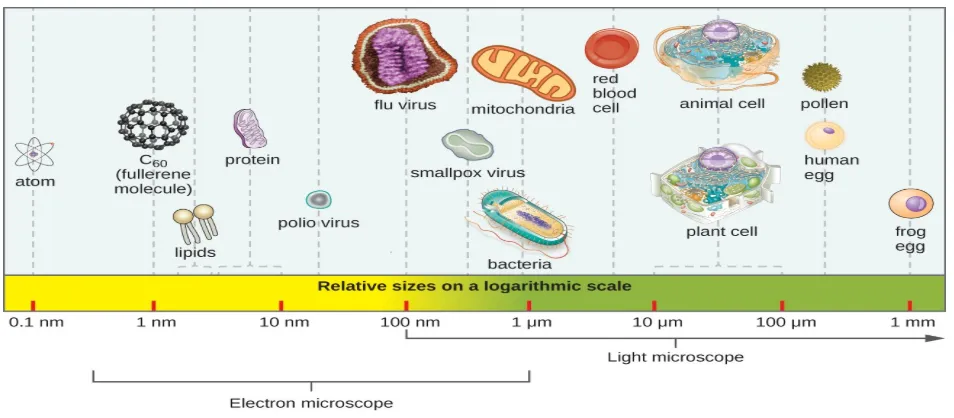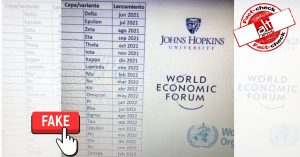A viral video accompanied by the following message has been circulating on WhatsApp.
“Finally W.H.O. cheated the world, Corona is not a Virus, but a bacterial infection and patients can cure only in one day. See this video and make it viral send to as many as possible.”
My Goodness is this true? Some1nd2findout. US n mny cointrirs wth strongest Intel agencies cudnt detect d fact? WHO. cheated d world?Is Corona not a Virus but a bacterial infection and patients can cure only in one day? See this video and share it so that d facts can b verified. pic.twitter.com/drXuR8uyd3
— Chowkidar Ravichiruvolu🇮🇳 proudBhaaratheeyan🇮🇳 (@Ravichiruvolu1) June 12, 2020
Claims
- “COVID-19 is a bacterium, not a virus.”
- “COVID-19 does not require ventilation or ICU admission.”
- “COVID-19 can be cured in a day.”
Verdict
False
Fact-check
1. COVID-19 is caused by a novel coronavirus named SARS-CoV-2, not a bacterium.
There are huge structural differences between virus, bacteria and human cells as visual observation of bacteria and human cells is possible with a simple microscope, but not of a virus. Typical animal or plant cells are between 10µm to 100µm in size, bacteria are much smaller around 1µm in size, viruses are even smaller between 5nm to 300nm (see picture below). The novel coronavirus is approximately 100nm in size (Bar-On, Y et al. 2020). These structural differences between animal (including human) or plant cells and bacteria can be observed in a basic laboratory of infectious pathogens, while we need specialised equipment to visualise viruses. If the infectious germ of COVID-19 was a bacteria, it would not have remained a matter of controversy for this long.

In patients presenting with an outbreak of viral pneumonia in January 2020, the responsible pathogen (disease-causing microorganism) was initially unknown. The fluid sampled from the lungs (bronchoalveolar lavage fluid) of the patients who had been exposed to the seafood market in Wuhan were obtained. They had tested negative for commonly known respiratory tract pathogens.
These samples were cultured, and genome sequencing was done. Genome sequencing is a process of finding out the order of DNA nucleotides, or bases, in all the genes—the order of As, Cs, Gs, and Ts that make up an organism’s genome. The genome sequences of those samples were remarkably similar (not the same) to a previously identified virus which had caused two outbreaks in the past. This new organism was thus identified as a new coronavirus and named SARS-CoV-2. The same virus (SARS-CoV-2) has since been found during the contact tracing for the infected individuals via RT-PCR test – the COVID-19 test conducted in the hospitals on suspected people.
Later, CDC, USA also released a schematic diagram of the virus structure (see below) to suggest the mechanism by which the virus enters the human cells. A protein on the surface of the virus (s protein) was found to be attached to a specific receptor (ACE2) on the surface of the human cell to gain entry and multiply inside the human cells (Xu, X et al 2020).

Therefore, evidence from tissue samples of patients, epidemiological data, clinical data, genomic data all conclusively establish that the current pandemic named COVID-19 is caused by a novel coronavirus and not by a bacterium.
2. Severe coronavirus infections require ventilatory and ICU support
About 5–15% of patients with COVID-19 infection require intensive care surveillance and ventilatory support (Möhlenkamp, S et al. 2020). This is primarily because of the effects of pneumonia and acute respiratory distress syndrome on the ability of the patient to maintain respiration on their own. Other manifestations of COVID-19 like Disseminated Intravascular Coagulation (DIC), acute pulmonary embolism, deep-vein thrombosis, ischemic stroke, myocardial infarction etc., usually require ICU support (Klok, F.A et al. 2020). Many of the difficulties of thromboembolism (dislodgement of multiple small clots from a more massive lump) or DIC require mechanical ventilation.
Therefore, it is not true that COVID-19 patients never require ventilator and ICU support.
3. COVID-19 cannot be cured in a day
The mean time between the onset of the disease to the recovery of COVID-19 patients is 24.7 days (Verity R et al. 2020), see figure below. Therefore, it is not true that COVID-19 can be cured in a day.

Conclusion
There is an ample amount of evidence that the current pandemic is caused by a novel coronavirus named SARS-CoV-2. It is absurd to assert that the nature of the microbe causing the epidemic and its cure, can all be kept hidden from the world. While COVID-19 deniers have various motives to spread conspiracy theories, it is the knowledge and communication gap between experts and the masses, and lack of trust in authorities that allow these theories to thrive despite easily available evidence to the contrary. While a viral video claiming that COVID-19 never requires ventilatory and ICU support and can be cured in a day would sound reassuring to people, this is not true.
Severe COVID-19 cases can only be managed with intensive care like organ support interventions. These conspiracy theories only make the situation worse as they encourage complacency and non-adherence to social distancing, rigorous hand-washing and use of masks.
References
Lu, R., Zhao, X., Li, J., Niu, P., Yang, B., Wu, H., … & Bi, Y. (2020). Genomic characterisation and epidemiology of 2019 novel coronavirus: implications for virus origins and receptor binding. The Lancet, 395(10224), 565-574.
Möhlenkamp, S., & Thiele, H. (2020). Ventilation of COVID-19 patients in intensive care units. Herz, 1.
Verity, R., Okell, L., Dorigatti, I., Winskill, P., Whittaker, C., & Imai, N. et al. (2020). Estimates of the severity of coronavirus disease 2019: a model-based analysis. The Lancet Infectious Diseases, 20(6), 669-677.
Klok, F. A., Kruip, M. J. H. A., Van der Meer, N. J. M., Arbous, M. S., Gommers, D. A. M. P. J., Kant, K. M., … & Endeman, H. (2020). Incidence of thrombotic complications in critically ill ICU patients with COVID-19. Thrombosis research.
Xu, X., Chen, P., Wang, J., Feng, J., Zhou, H., Li, X., … & Hao, P. (2020). Evolution of the novel coronavirus from the ongoing Wuhan outbreak and modelling of its spike protein for risk of human transmission. Science China Life Sciences, 63(3), 457-460.
Independent journalism that speaks truth to power and is free of corporate and political control is possible only when people start contributing towards the same. Please consider donating towards this endeavour to fight fake news and misinformation.




